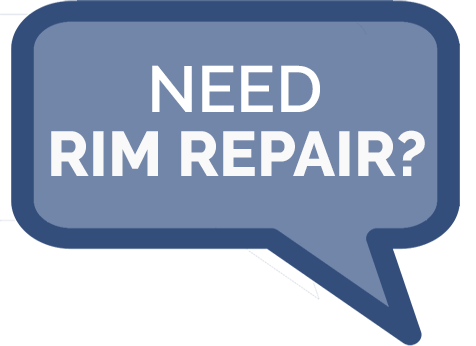What’s Involved in the Rim Lathing Process?
Rims with a two-toned appearance (combining a painted pocket and interior with a bright silver metallic spoke and front face) have become a very popular wheel finish – especially among vehicles that have the upgraded wheel package.
Although these rims look great, there are special considerations that need to be taken with repairs. Because of the signature look of lathe-cut metal, simple spot repair service may not be the best for your wheels.
We understand it can be daunting for those with a limited background in wheel repair to understand all of the processes needed to restore machined rims to a like-new appearance.
That’s why we’ve written this blog – to explain the basics of the multi-step lathing process required to fix a damaged rim.
A wheel lathe is the tool we use to fine-tune and repair vehicle rims. Through lathing, our technicians “re-cut” rims into the proper shape.
Below, we’ve listed the 12 primary steps our experienced technicians take each time they repair a rim using lathing methods…
1) Assess the damage.
First and foremost, we need to determine what parts of the rim need reconditioning.
2) Break down the wheel.
Once we know what we’re dealing with, we remove the tire, wheel weights, center caps, valve stems, TPMS sensors, and everything else attached to the rim – leaving only the aluminum rim.
3) Strip off the rim coating.
We do this ONLY if the factory clear coat is flaking or peeling, the factory-painted areas have sustained extensive damage, OR the wheel has already had a cosmetic spot repair in the past.
4) Wash the rim thoroughly.
To remove any remaining coating, we give the rim a good wash.
5) Repair any scuffs.
We sand down the rim to remove any scuff marks. In order for powder coating – and really any kind of paint – to stick to the rim properly, the wheel’s surface needs to be a little rough.
6) Wash the rim thoroughly, again.
Sanding the rim allows us to properly prime the surface for the coating but it leaves fine debris that interferes with the adhesion of the coating. After sanding, we wash the wheel again to remove any debris left after our media scuff (step 5).
7) Address issues with painted pockets.
If we did not have to strip the rim coating (see step 3), we apply paint touch-ups to any areas that have minor nicks.
If we did strip the rim, we go ahead and spray a foundational layer of powder coating.
8) Probe the geometry of the rim & program the CNC cutter.
The Rimguard Inc. team uses a computerized numerically controlled (CNC) lathe to repair and shape rims. In order for the process to work properly, we must take detailed measurements of the rim and enter them into the CNC lathe software.
9) Instruct the CNC cutter to cut the rim.
Once all the geometry is plugged into the CNC lathe software, it’s time to cut the rims! Our technicians direct the lathe to cut the rims, removing excess metal to develop a smooth rim surface (a process called facing).
10) Clean up and deburr the edges.
After using the CNC lathe to cut the rim, the back edges of the may still be very sharp. To avoid issues when coating the rim, we need to smooth out these edges.
NOTE: Even if we perform this step, there can still be some jaggedness in the clear coat due to excess powder build-up on the edges. The static charge that occurs when a rim is powdered tends to attract more powder to the rim’s sharp edges than to its smooth, flat surfaces.
11) Apply a clear powder coat.
To give your rim that nice, polished finish, we coat it with a clear powder using an electrostatic spray gun.
12) Reassemble the rim.
The rim is finished! It is finally time to put your wheel back together, reattaching all the parts removed for the lathing process.
RIMGUARD INC. | RALEIGH, NC RIM REPAIR
Need rim repair in Raleigh, North Carolina? The Rimguard Inc. team can help!
READ MORE:

